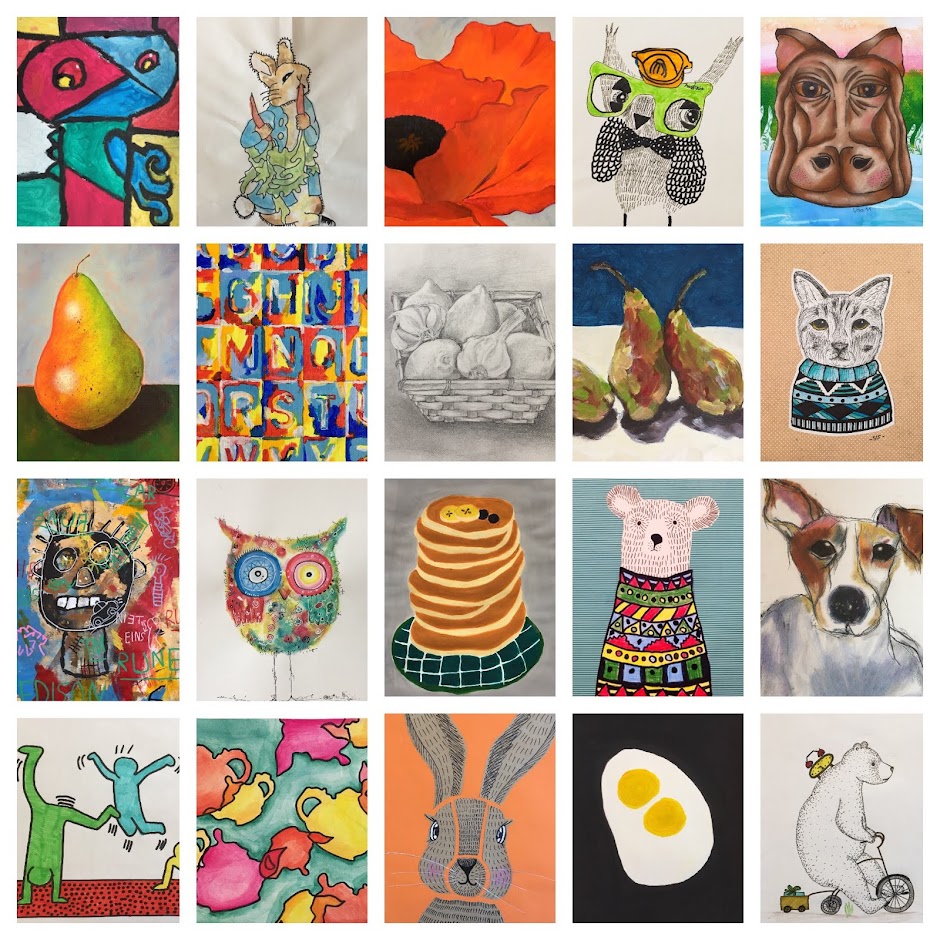I LOVE the German-Swiss painter and Bauhaus teacher Paul Klee. His has such a broad body of work, with more than 9000 works to his name. Most of his work is small format watercolors. He loved this beautiful medium and explored it at great length. Klee was first and foremost a colorist, and analyzed this component of art to near esoteric levels.
This landscape project is one of many I did with my students based on Paul Klee.
1. We looked at Klee's use of line, his curvy hills fractured into sections, and the use of symbols in his work, and considered how he simplified his drawings, such as trees and houses.
2. Drawing on small format watercolor paper (A5 size) with pencil, we began with a foreground wavy line, and a middle ground wavy line. We left room for the sky and a moon/sun, since we see this is much of Klee's work.
3. We added our choice of Klee-esque symbols and reduced imagery.
4. We traced our lined in permanent marker.
5. We looked at a color wheel and chose a split complementary color scheme, plus black and white. We pained our landscape, mindful of moving our colors around for good balance, and mixed our cool with black and white to achieve this darker, more neutral values.
These are so beautiful and undeniably Klee.
These were done by kids 6-11



































